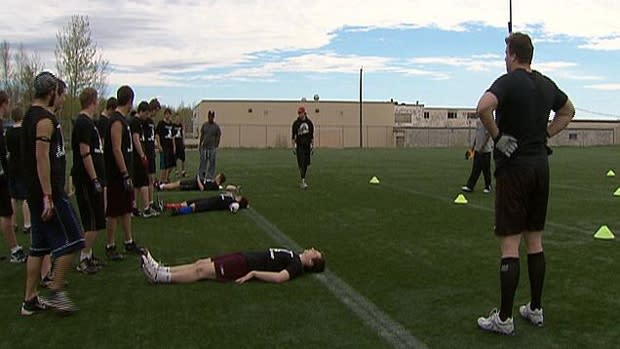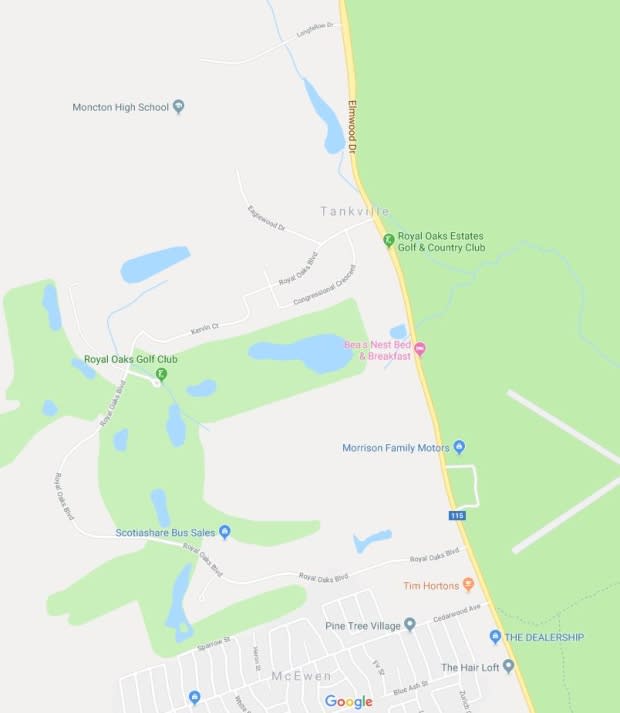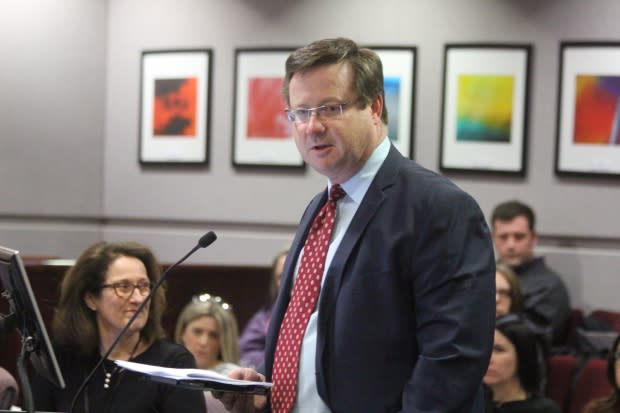Moncton High students miss out on extracurriculars because of school location
About 1,200 students attend classes at Moncton High School every day, but according to the principal, the location of the school means less than a third are able to take part in after-school activities.
Mike Belong told Moncton council Monday night that students don't feel connected to their school, and that is a problem.
He said student participation in sports at Moncton High, on the northern outskirts of the city, is at 31 per cent, compared with 43 per cent nationally.
Participation in school clubs is also below the national average of 39 per cent, at 28 per cent.
"Because we're just on the city edge, we have a lot of students that cannot access staying after school to play on sports teams, go to drama, watch their friends play, because they don't have the means."

Belong said between 700 and 800 of Moncton High's students come from Moncton, while the others come from nearby cities and towns, including Dieppe and Shediac.
He asked Moncton council to extend its Codiac Transpo service to include stops at Moncton High School on weekday afternoons and evenings and on Saturdays.
"We are the biggest school in the city," Belong said. "We have a huge demographic. We have one of the lower socioeconomic statuses … and we need some support."
Codiac Transpo's Caledonia 66 line goes as far as Pine Tree Village subdivision, which is just three kilometres from Moncton High School.
"If we could get some bus runs extended beyond Pine Tree that came to the school through the week at 6 o'clock at night, that would help us get kids in town and they could stay for extra help, or sports or whatever."

Nearby residents worry about speed
Kevin Morrison, president of the Royal Oaks Community Association, also addressed Moncton council on Monday night about transportation concerns around Moncton High.
"We'd appreciate if the city could review and consider some action with respect to the volume of traffic and frankly community safety," he said.

Morrison pointed out that when the school was planned, the primary entrance was intended to be Longfellow Drive, which runs off the main artery, Elmwood Drive.
Later in the planning, a secondary entrance was added behind the school off Eaglewood Drive, which runs through the Royal Oaks residential subdivision.
Morrison said only the school buses use the main Longfellow Drive entrance.
"Unfortunately, 90 per cent of the rest of the traffic is coming through Royal Oaks and up a small street into the back of the high school," he said.
"The issue is significant speeds in excess of 100 kilometres an hour, with students and community members walking in areas where there isn't any sidewalk. So this is a big concern."

Morrison is asking council to close the Eaglewood entrance to all but emergency vehicles and special events.
He said if that's not possible, speed bumps should be added to Eaglewood Drive and speed limit signs of 25 km/h should be erected.
"And if you could, please, as a city, request that the RCMP … spend some time in our community to slow down traffic," he asked council. "We've made numerous requests and had very little attention."
Finally, Morrison asked for sidewalks to be extended about 150 metres, from Elmwood Drive to Eaglewood Drive.
Alcide Richard, director of design and construction with the City of Moncton, said the sidewalk should be built this summer as long as council approves the project.
City manager Marc Landry said he would take the requests to staff, who will cost them out, and report back to council.

